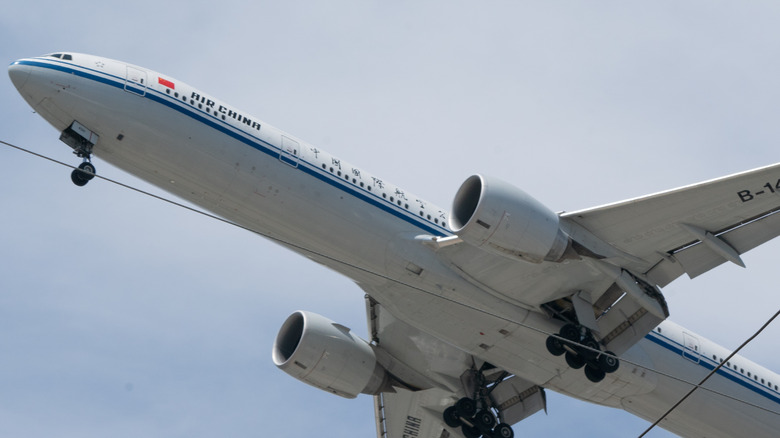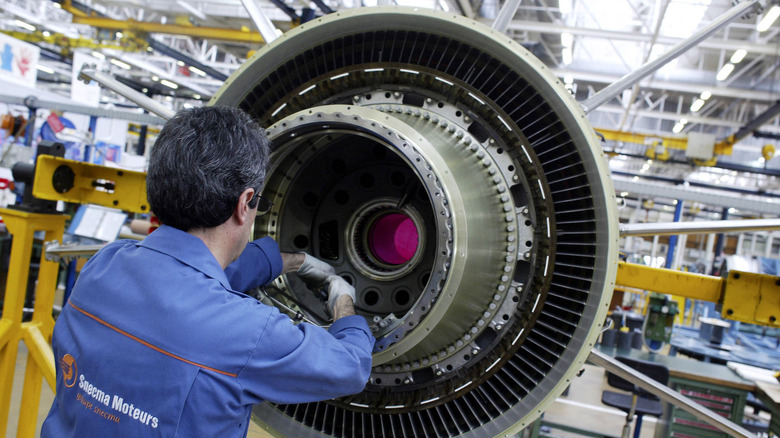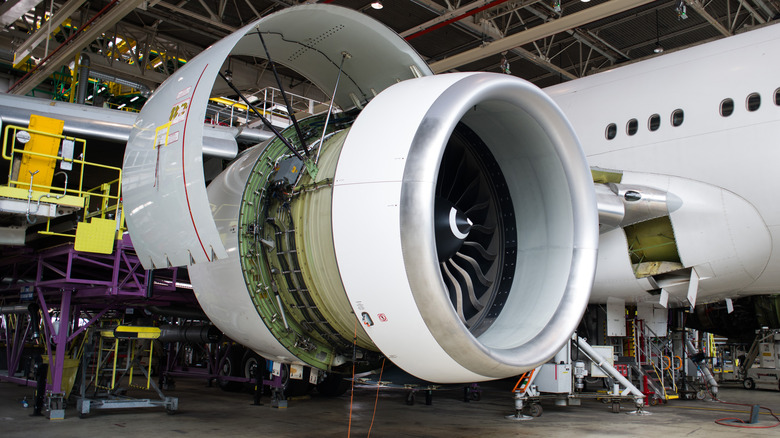Here's What Makes The GE90 Jet Engine So Incredible
The development of the jet engine was a defining moment in the history of aviation. The first planes to utilize the technology, naturally, went through a bumpy transition period as the rules of what airplanes could do were re-written again. DeHavilland's astonishing Comet, the world's first ever jet airliner, was plagued by reliability issues and even tragic crashes and fatal explosions, such as the one that befell a flight from Rome in April 1954. Three dozen people were killed in that incident.
Over time, jet technology became increasingly advanced, revolutionizing commercial and military flights alike. There's an ongoing global effort to make aircraft wider-ranging, less costly to run, and ideally, more environmentally friendly. One of the most significant developments in these regards was the GE90 jet engine.
While they may not be the most aesthetically-pleasing engines (not that the likes of the impressive scramjets of today are built with that concern in mind), their performance is something truly special.
The incredible GE90-94B engine
The first of the two GE90 models was the GE90-94B. Like Pokemon, Tamagotchis and the Spice Girls, it was a tremendous success story in the 1990s, created by General Electric for aviation giant Boeing's 777 airliner. The 777 family itself was revolutionary, making a name for itself through its spacious interior, quieter and more efficient engines — and, as time went on, further improvements like the increased fuel capacity of the 777-300 (British Airways).
These aircraft models are recognizable by their distinctive engines. The General Electric engines that power this model are far more than just showy talking points: they were a great fit for the 777 line's focus on powerful, spacious, and comfortable flight.
In June 1999, GE issued a press release stating that the 94B was undergoing tests with a Boeing testbed in California, and that the real thing was set to be certified and in service with Air France in November 2000. Even before entering service, it was abundantly clear that this engine was going to be a game-changer.
GE boasted that their engine would dramatically cut fuel costs by efficiently cutting the amount of jet fuel that was burned away and wasted. This engine was projected to save more than $300,000 in fuel, and above $2 million in overall efficient performance. There was certainly no power compromise in the process, either: Its remarkable 90,000-pound thrust had to be toned down from the initial 94,000-pound achieved during trials.
The GE90-115B engine, and beyond
Iterating on already-stellar products is the primary focus for all manner of technology companies, regardless of industry. This was General Electric's aim with the GE90-115B, and the finished product didn't disappoint. In delivering thrust of 100,000 pounds, it became the first engine to do so, and was deemed the one capable of powering the longer flights made possible by the mid-2000s additions to the 777 family: the Boeing 777-200LR and 300ER.
The 115-B, a version of the GE90 enhanced with what General Electric described as "toughened composite fan blade material, blade-out load reduction features, increased torque fan midshaft material, high pressure turbine 3D-aero airfoils, and low pressure turbine low solidity airfoils," meaning it was built to last.
So much so, in fact, that the company celebrated 25 years of service by the GE90 in July of 2020. During that time, the company reported this brilliant family of engines had flown for a total of 100 million hours, enough to travel to Mars and back approximately 199 times. Speaking from General Electric at the time, GE90 Program General Manager Mike Kauffman promised that the "dedicated product support team that will continue to maintain the GE90 for many years to come."


